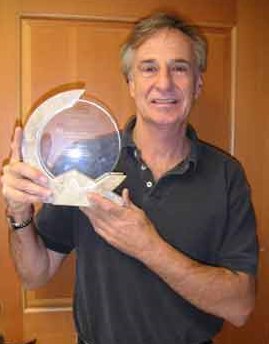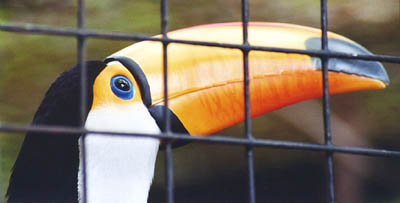Materials scientists could soon benefit from the first ever detailed engineering analysis of toucan beaks. Toucan beaks are incredibly tough and have a surprising impact-absorbing sandwich structure according to the study, which could provide engineers with a near-perfect model for novel aeronautics and construction materials.
As a boy growing up in Brazil in the 1960s, Marc Meyers occasionally found toucan bills on the forest floor and marvelled at just how tough were these lightweight objects. Today, he is a materials scientist at the University of California San Diego and has aeronautics and automobile designers excited about the benefit of using the structure of the toucan beak to create novel composites that are almost as tough and lightweight.

Marc Meyers
The interior of the toucan beak is a rigid foam made of cancellous bony fibres and drum-like membranes between layers of keratin, the protein that makes up fingernails, hair, and horn. It is this structure that seems to give it its strength. Our computer modelling shows that the beak is optimized to an amazing degree for high strength and very little weight, Meyers explains, It’s almost as if the toucan has a deep knowledge of mechanical engineering. Meyers suggests that this avian bio-composite could inspire the design of ultra-light aircraft and vehicle components with synthetic foams made with metals and polymers.
The big surprise was our finding that the beak’s sandwich structure also behaves as a high energy impact-absorption system, he adds. Panels that mimic toucan beaks may offer better protection to motorists involved in crashes.
Bird beaks are typically either short and thick or long and thin. The toucan beak on the other hand is long and thick, but despite this, surprisingly strong. Meyer’s team decided to determine what structural trick nature was playing for this to be so. They analyzed beaks from toucans that had died of natural causes and determined their density, stiffness, hardness, and response to compression and stretching. They also examined the beaks using scanning electron microscopy.

Toucan beak – Structural analysis could release beaky potential (Photo by David Bradley)
The beak is mostly air, said Meyers. While the inner part of human bone also contains cancellous bone, we don’t have the foam interconnections, which produce a much stronger structure with very little additional weight. Like a house covered by a shingled roof, the foam is covered with overlapping keratin tiles, each about 50 micrometres in diameter and 1 micrometre thick, which are held together by a natural glue to form sheets.
The toucan beak is an example of the harmonious integration between materials and structure, Meyers told Spotlight. While our conventional engineering approach separates these two (and we have separate mechanical/structural and materials engineers), nature integrates the two. This advanced approach to design, which was pioneered by British materials scientist Michael Ashby [at Cambridge University] will gradually permeate our thinking.
When we did our calculations, we also discovered that there are only very insignificant mechanical stresses in the centre of the beak at the position of the hollow areas, said Meyers. This is why I jokingly tell my students that toucans have a deep knowledge of mechanics. They don’t bother adding structural support in a part of the beak that doesn’t really need it.
Further reading
Acta Materialia, 2005, 53, 5281-5296
http://dx.doi.org/10.1016/j.actamat.2005.04.048
Marc Meyers’ group
http://meyersgroup.ucsd.edu/